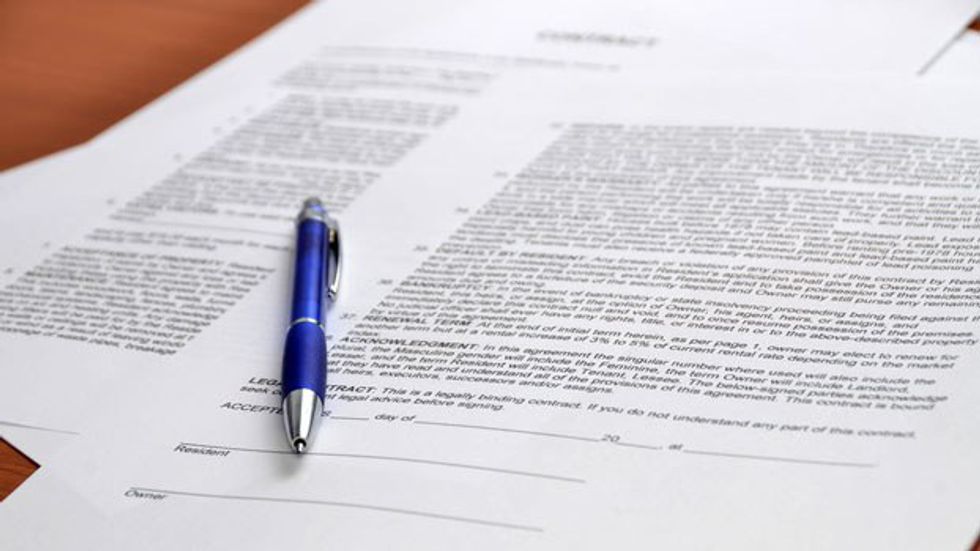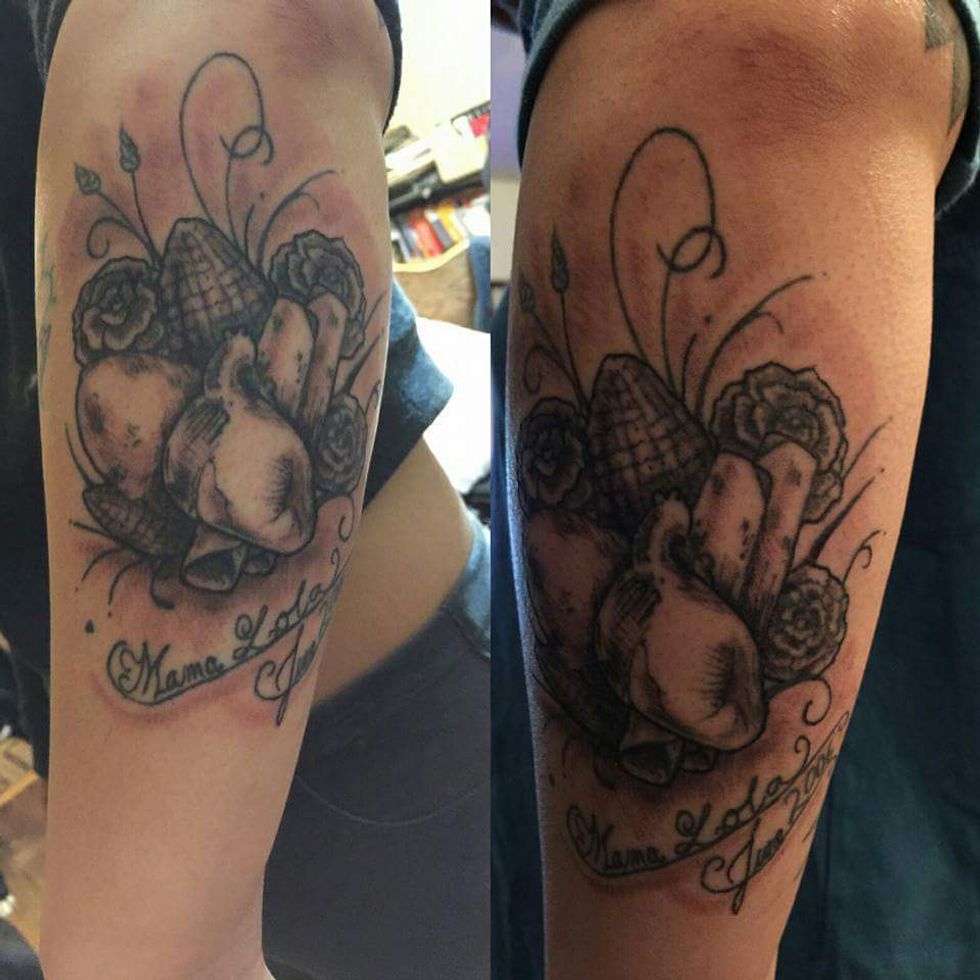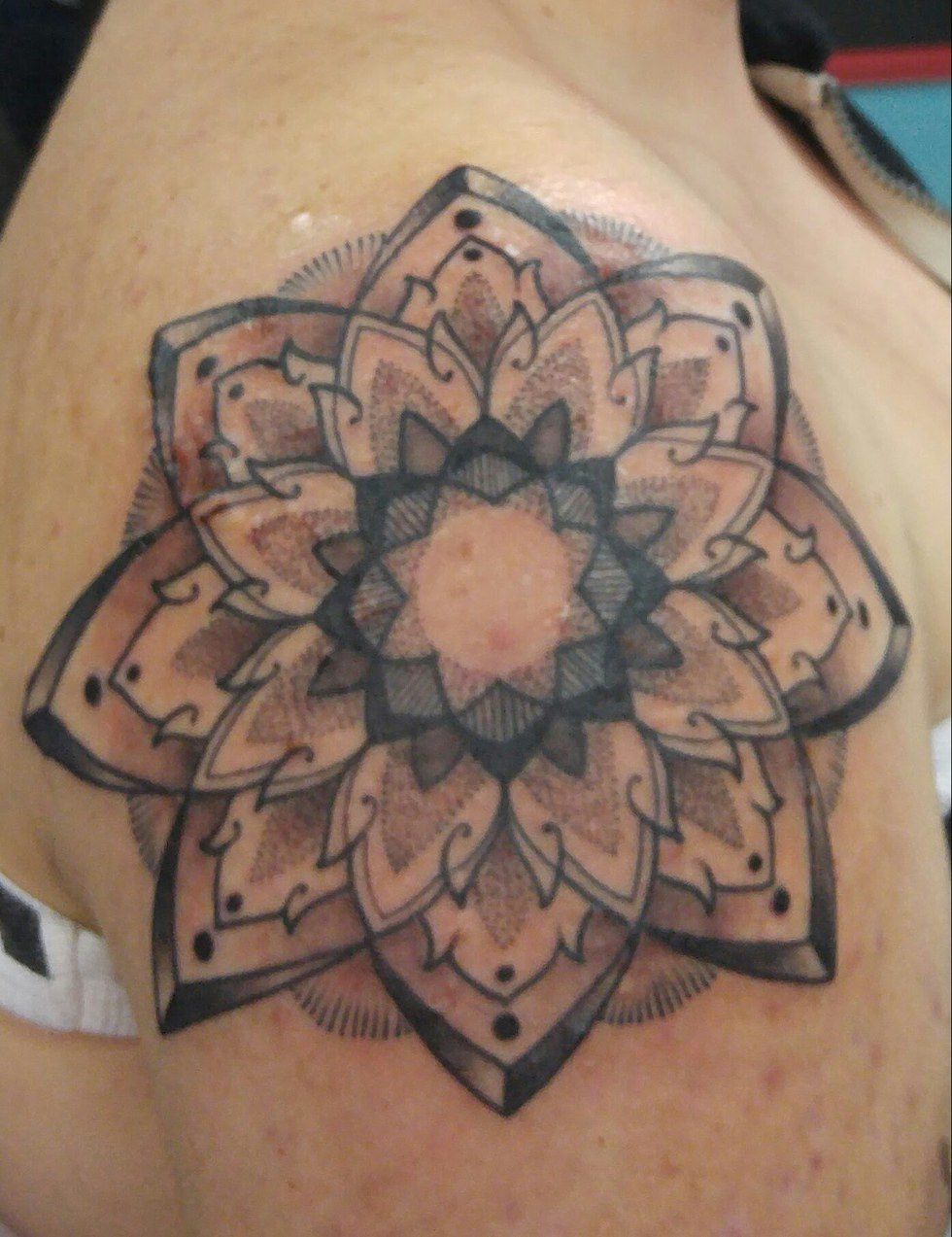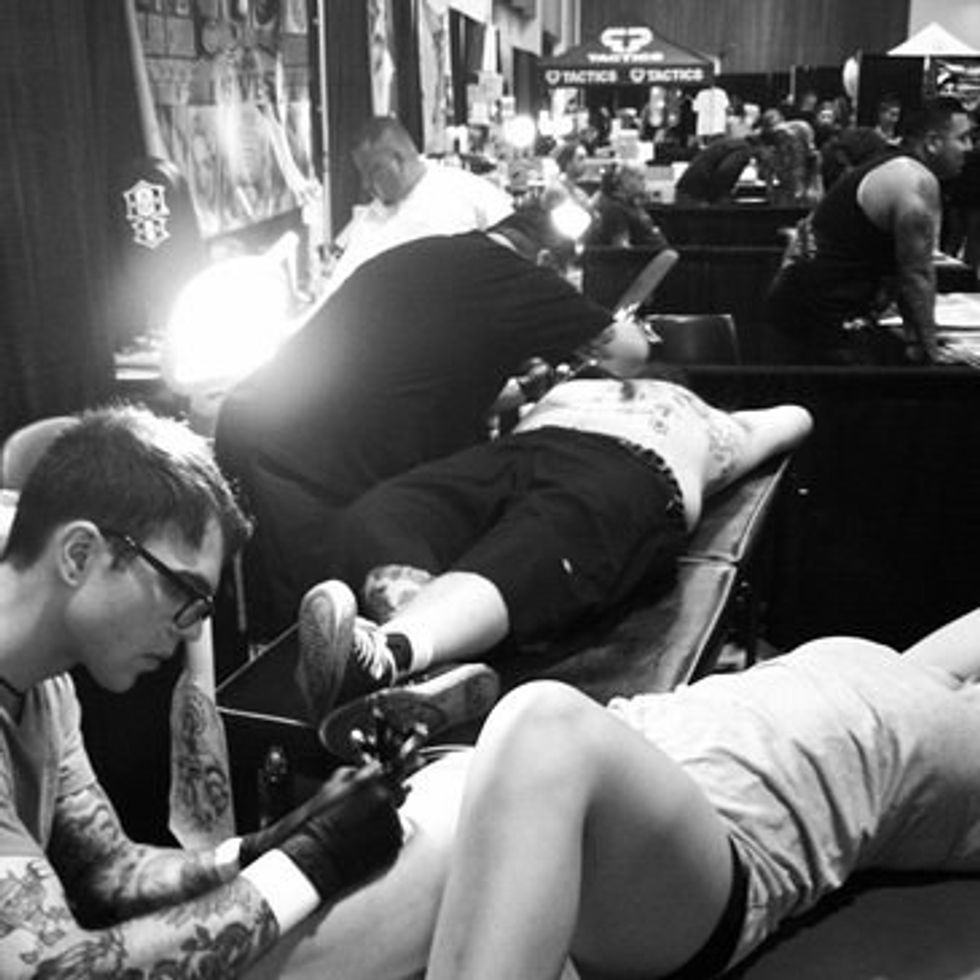So what do you think of when you hear the word, tattoos? Awesome colorful images embedded into a person’s skin, of course. Perhaps an image of burly biker men with pinup girls on their arms comes to mind. Or, you might imagine a family member imprinting a loved one's name in remembrance. Essentially, tattoos are a form of self expression that happen to stay on one’s body for a lifetime. And making the decision to get a tattoo is a serious undertaking. There’s a lot that goes into the thought of getting a tattoo, mentally and physically preparing for one, and then actually getting the ink into your skin. It really is a wild process, and below is a breakdown of what you can expect and how to prepare for a tattoo.
Make a plan.
An initial step when deciding to get a tattoo is what you would like and where you would like it placed on your body. Ask yourself some important questions.
- Do I want a quote or an image? And of what?
- How large should the tattoo be?
- What is my pain tolerance like?
- Where should the tattoo be placed?
- Do I want color or simply black ink?
- Am I going to love this forever?
Of course, it is important to have an idea of what you would like drawn into one's body. Start sketching some ideas, or talk to friends and family about some possible ideas. Go online and find some images to help with brainstorming. Design it out, with color and placement in mind. Understand that a tattoo is a permanent mark on the human body.
Of course, getting a tattoo is not going to feel like you are getting a massage. A good rule of thumb for tattoo placement in regards to pain tolerance or threshold, is that wherever there is more contact to muscle or bone, the more irritating or uncomfortable it can feel. For example, the top of the foot, or the rib cage area, is an incredibly sensitive or tender location compared to a shoulder or thigh.
It is also wise to consider the size of the tattoo that will affect the duration of the inking process. A small tattoo on the inner forearm with no color may take from 20 to 45 minutes compared to a whole shoulder tattoo with three colors. Depending upon shading or etching factors and details within the tattoo may also take more time, which also requires larger needles that can an inflict a steadier discomfort. If you are concerned, consult your doctor and the tattoo shop for guidance!
Pick the shop and artist.
The next step is to consider what shop and artist you would like your tattoo to be done. Do some research, not only of the health care or sanitary guidelines per shop, but also the artist as well. Ask for tours of the establishment, question their credentials, and gauge whether or not the artist you are possibly interested in working with is ready and willing to be your support and caretaker for the duration of inking process. If the shop in question is legitimate, there will be a sign in front of the establishment that shows your state's Department of Health has signed off on the shop in question that it is indeed a clean and safe facility.
Photo credit: Amanda Meyer from The Parlour Tattoo
Sign up
Once you have found an appropriate shop and artist, begin the consultation process! This is where you show the artist your personal sketches, inspired images, or general thoughts about the tattoo you would like. Consider giving the artist a certain degree of creative freedom; for their professional experience may produce a draft that you admire more than your original idea. Understand that you will be meeting the artist a few times after the initial consultation to go over the process, preparation, and to pick the final tattoo.
Once the final tattoo has been decided, you will sign up for the final appointment where the inking process will occur. Most shops request a deposit, a portion of the tattoo cost that will be later paid in full. Also have personal identification on hand and prepare to fill out necessary paperwork, such as a health and safety waiver. This is where you would really check in with yourself about how you feel for the tattoo; as well as the artist, shop, and your comfortability with them. Take your time, for it is a big decision!

Before and during the tattoo session.
Here are some general rules to follow the day before you would go in for your tattoo session as well as during.
Before the session:
- Keep yourself hydrated, at least one to two liters of water a day.
- Get a good night’s rest the night before.
- Eat before your session; it is incredibly important! Getting a tattoo is a massive workout for the human body and it needs fuel during the session. Don’t be afraid to eat a hearty lunch or a greasy breakfast.
During the session:
- Even after a solid meal, bring snacks you can eat one-handed. Chocolate, water, Gatorade, or granola bars work wonders for your energy level and stamina.
- Remember to breathe. This is so important, and a lot of people forget to do it. Take deep breaths primarily through the nose on the count of six.
- Try not to tense up your limbs, or hold onto anything. If a friend or family member accompany you, that rule is especially true. However, use them as distractions through conversation, but do not move around too much.
- Above all, consider your personal limits. It is OK to ask for a break, or a moment to relax or breathe. Depending upon the length of the session, most artists require breaks to refurbish their stations, as well as to let your body acclimate to current scenario. Before long, the process is over!
Aftercare.
Yes, you have a tattoo! Now what? Here comes the healing process. A tattoo is essentially body modification in the form of a wound. So it will take some time to heal. Along with the tattoo artists proper aftercare instructions that is mandatory for you to hear, I have some general tips.
Most artists will wipe the area that was inked down, and wrap it up with a bandage or gauze to protect it from the elements. I would recommend keeping the bandage on for no longer than one hour, however, an exact time frame is up for debate. Prepare to see blood, and for the area to be relatively sensitive and fresh. With room temperate water, rag, and some antibacterial soap, begin to clean the area. Be gentle, do not rub but dab in the soap and water, then simply let the water linger for a bit on the area. After that, dab the area dry with a soft rag and prepare to apply lotion.
Do not apply any lotion that is scented or colored, but apply a generic brand of white unscented lotion. Repeat this process about three times a day, for a little over a week. As time moves on, be aware that a few touch ups on lines and color may have to occur to keep the tattoo at the aesthetic level you desire. A great way to keep tattoos in new condition is to apply sunblock, especially in the summer, and stay away from any scented or harsh products. Before you know it, you will become addicted to tattoos!
Below are some personal ones that might inspire you.




























